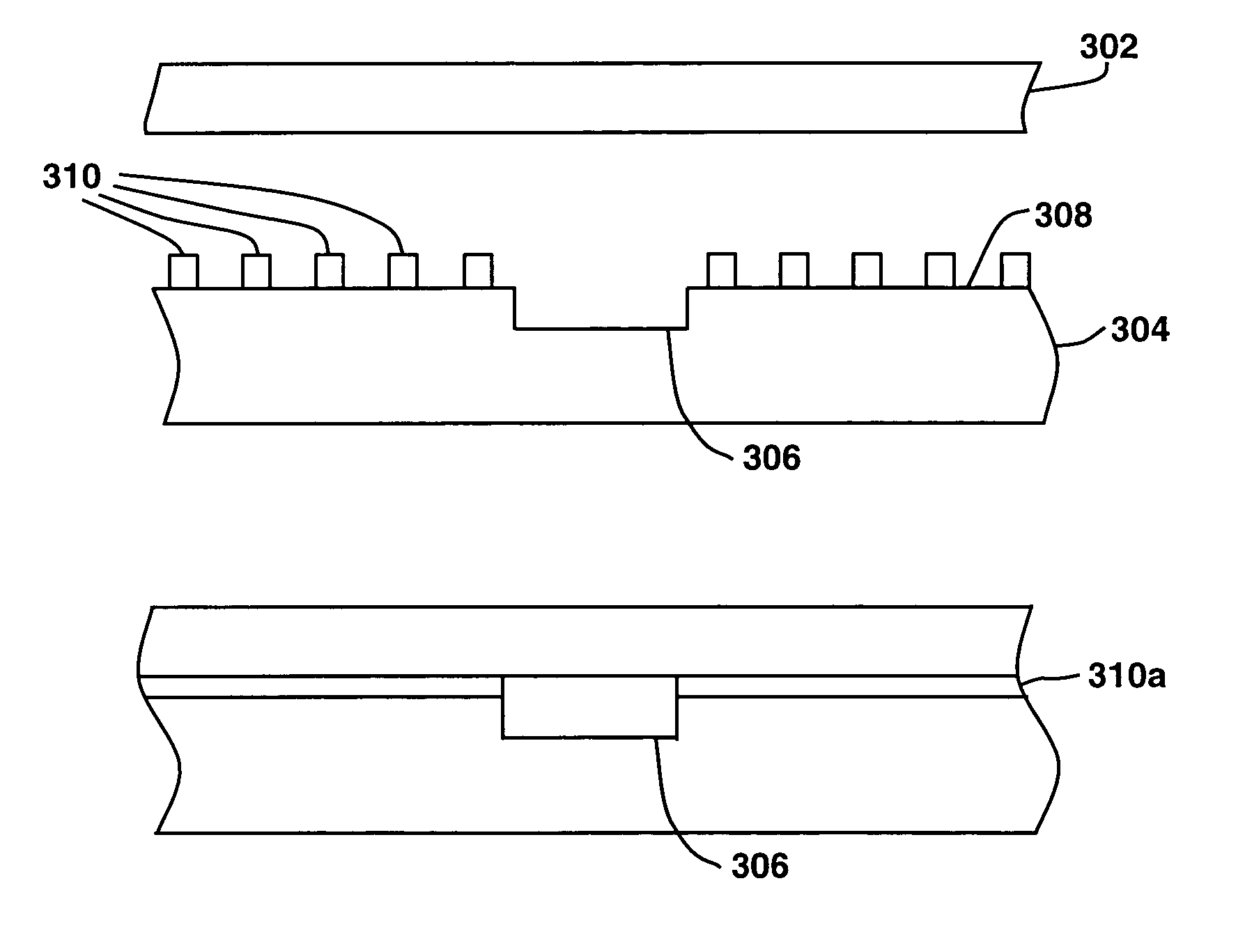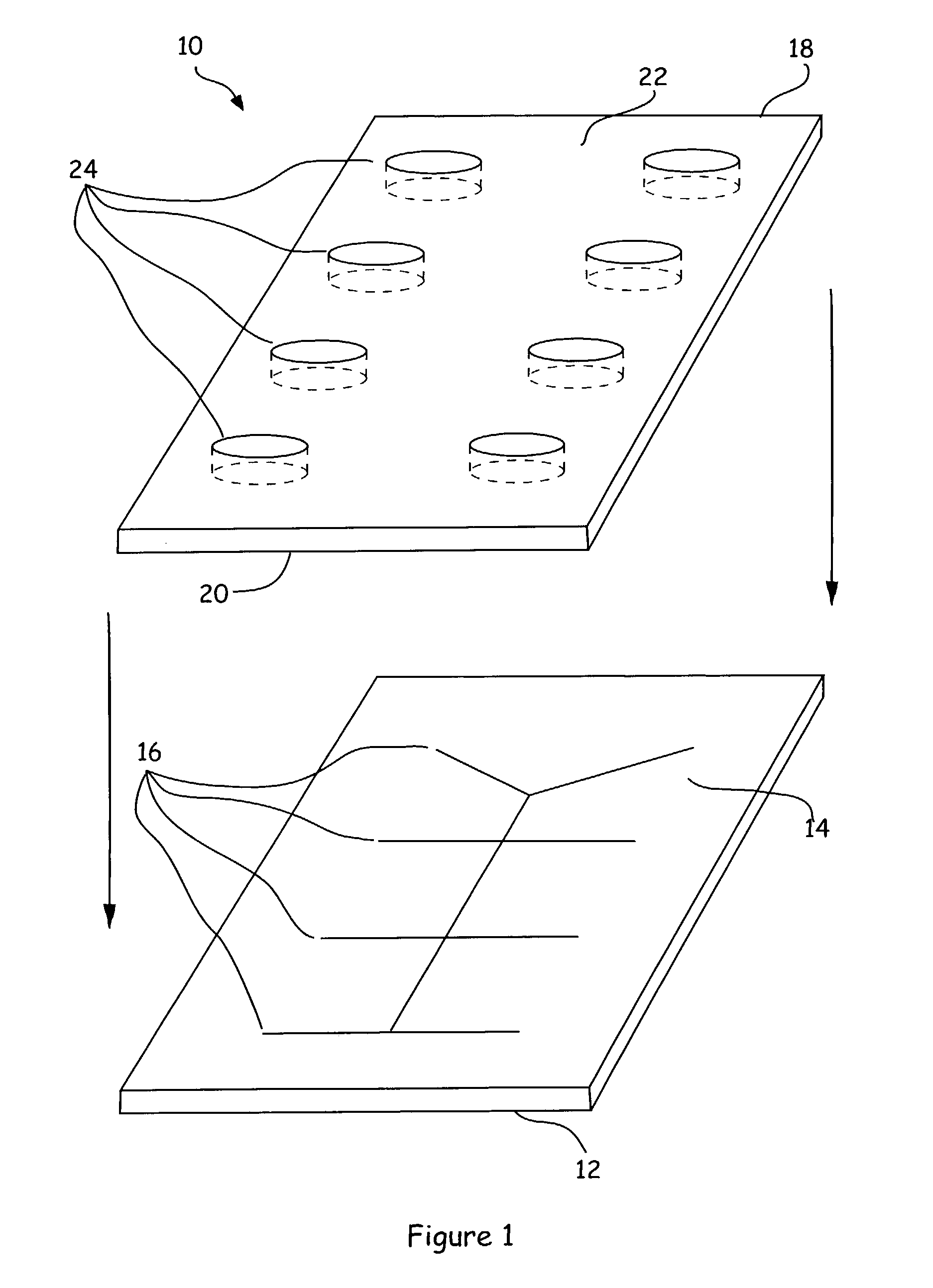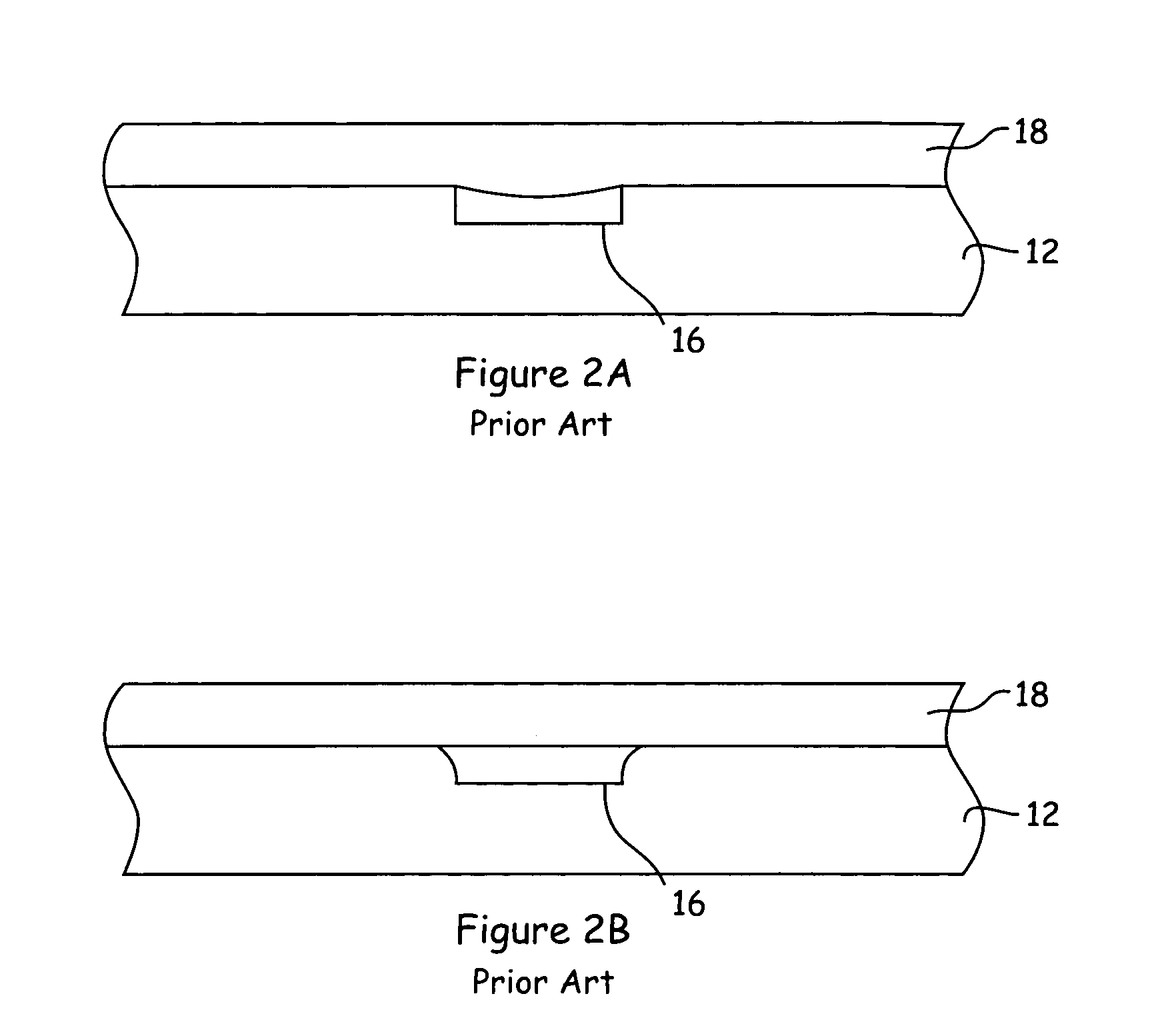Methods of fabricating polymeric structures incorporating microscale fluidic elements
a technology of micro-fluidic elements and polymeric materials, which is applied in the field of methods of fabricating polymeric structures incorporating micro-fluidic elements, can solve the problems of small reaction time, difficult to accurately manufacture micro-scale structural elements in such polymeric materials, and the amount of reactant transportation and/or mixing is difficul
- Summary
- Abstract
- Description
- Claims
- Application Information
AI Technical Summary
Benefits of technology
Problems solved by technology
Method used
Image
Examples
example 1
Polymer Selection
[0064]Polymers were selected based upon their clarity, low fluorescence, processability and commercial availability. Several polymer materials were evaluated, as set forth in Table 1, below.
[0065]
TABLE 1PlexiglasMakrolonLexanAcrylite M-30Acrylite L-40VS UVTDP-1-1265OQ1020LProperty(Acrylic)(Acrylic)(Acrylic)(Polycarb.)(Polycarb.)Transmittance9292928990Haze (%)22. . .. . .Melt Flow Rate2428247565(g / 10 min)(all at 230° C.,3.8 kg)Refract. Index1.491.491.491.5821.58Dielectric19.719.7. . .>1614.8–17.6Strength(kV / mm)Vol. Resistivity. . .. . .. . .1.0 × 10161.0 × 1017(Ohm / cm)SupplierCYRO Indust.Cyro Indust.Atohaas,BayerGE PlasticsNorth Am.
Based upon the results shown in Table 1, acrylic polymers, and particularly polymethylmethacrylate were selected as the best polymer substrate, with polycarbonate being the next best selection. Further tests were performed on these polymers and the results are shown in Table 2. Polymer resins were tested using injection molded test plates....
example 2
Thermal Bonding of Polymer Substrates
[0068]Initial bonding experiments utilized an embossed channel plate (substrate) fabricated from Plexiglas clear 99530 (described above). The channels had dimensions of 100 μm wide and 32 μm deep. A L-40 PMMA cover plate was thermally bonded to the channel plate at 84° C., the softening point of the L-40 polymer, and with an applied force of approximately 10 kg. Cross-sectional examination of the bonded channel showed that while the embossed channel plate maintained its structure, the cover plate had deformed into the channel, as shown in FIG. 5A. The provided dimensions are approximate. The bonding temperature was then adjusted to 80° C., and the experiment repeated. In this latter experiment, the cross section of the bonded parts showed that the channel had achieved a good seal, the channel was not distorted, nor had the cover plate substantially flowed into the channel as shown in FIG. 5B.
PUM
| Property | Measurement | Unit |
|---|---|---|
| height | aaaaa | aaaaa |
| height | aaaaa | aaaaa |
| height | aaaaa | aaaaa |
Abstract
Description
Claims
Application Information
 Login to View More
Login to View More - R&D
- Intellectual Property
- Life Sciences
- Materials
- Tech Scout
- Unparalleled Data Quality
- Higher Quality Content
- 60% Fewer Hallucinations
Browse by: Latest US Patents, China's latest patents, Technical Efficacy Thesaurus, Application Domain, Technology Topic, Popular Technical Reports.
© 2025 PatSnap. All rights reserved.Legal|Privacy policy|Modern Slavery Act Transparency Statement|Sitemap|About US| Contact US: help@patsnap.com



